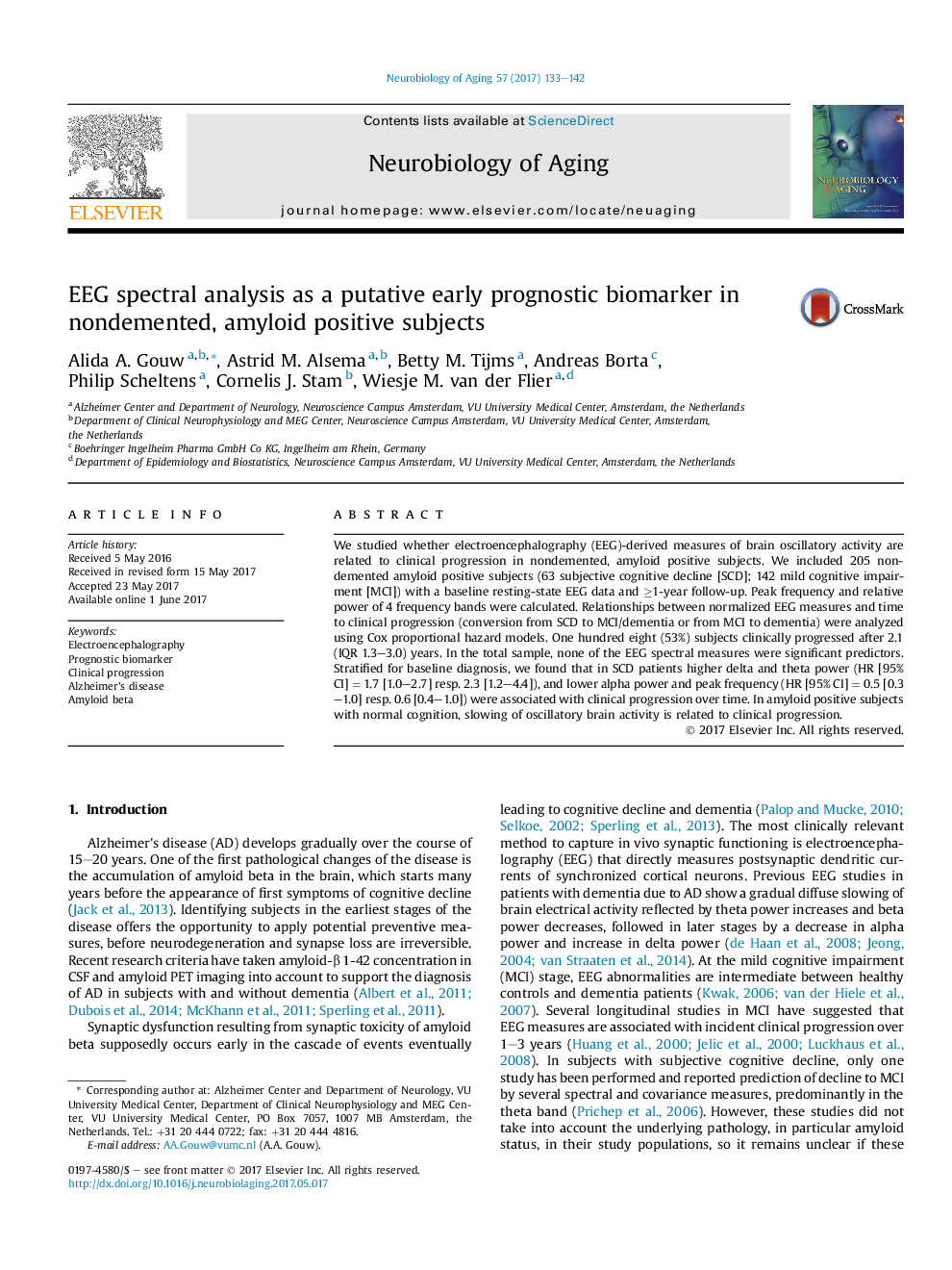| Article ID | Journal | Published Year | Pages | File Type |
|---|---|---|---|---|
| 4932655 | Neurobiology of Aging | 2017 | 10 Pages |
Abstract
We studied whether electroencephalography (EEG)-derived measures of brain oscillatory activity are related to clinical progression in nondemented, amyloid positive subjects. We included 205 nondemented amyloid positive subjects (63 subjective cognitive decline [SCD]; 142 mild cognitive impairment [MCI]) with a baseline resting-state EEG data and â¥1-year follow-up. Peak frequency and relative power of 4 frequency bands were calculated. Relationships between normalized EEG measures and time to clinical progression (conversion from SCD to MCI/dementia or from MCI to dementia) were analyzed using Cox proportional hazard models. One hundred eight (53%) subjects clinically progressed after 2.1 (IQR 1.3-3.0) years. In the total sample, none of the EEG spectral measures were significant predictors. Stratified for baseline diagnosis, we found that in SCD patients higher delta and theta power (HR [95% CI] = 1.7 [1.0-2.7] resp. 2.3 [1.2-4.4]), and lower alpha power and peak frequency (HR [95% CI] = 0.5 [0.3-1.0] resp. 0.6 [0.4-1.0]) were associated with clinical progression over time. In amyloid positive subjects with normal cognition, slowing of oscillatory brain activity is related to clinical progression.
Keywords
Related Topics
Life Sciences
Biochemistry, Genetics and Molecular Biology
Ageing
Authors
Alida A. Gouw, Astrid M. Alsema, Betty M. Tijms, Andreas Borta, Philip Scheltens, Cornelis J. Stam, Wiesje M. van der Flier,
